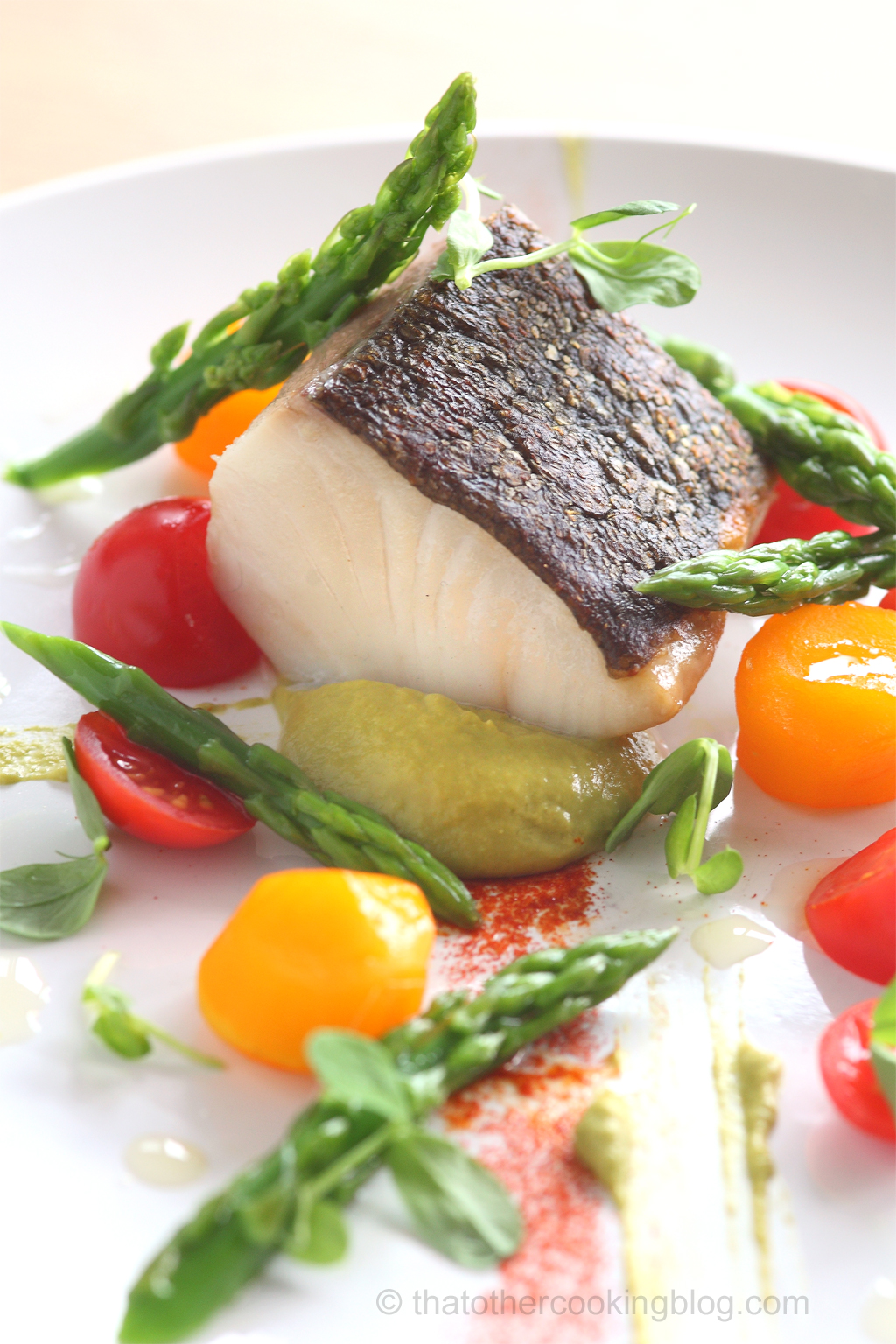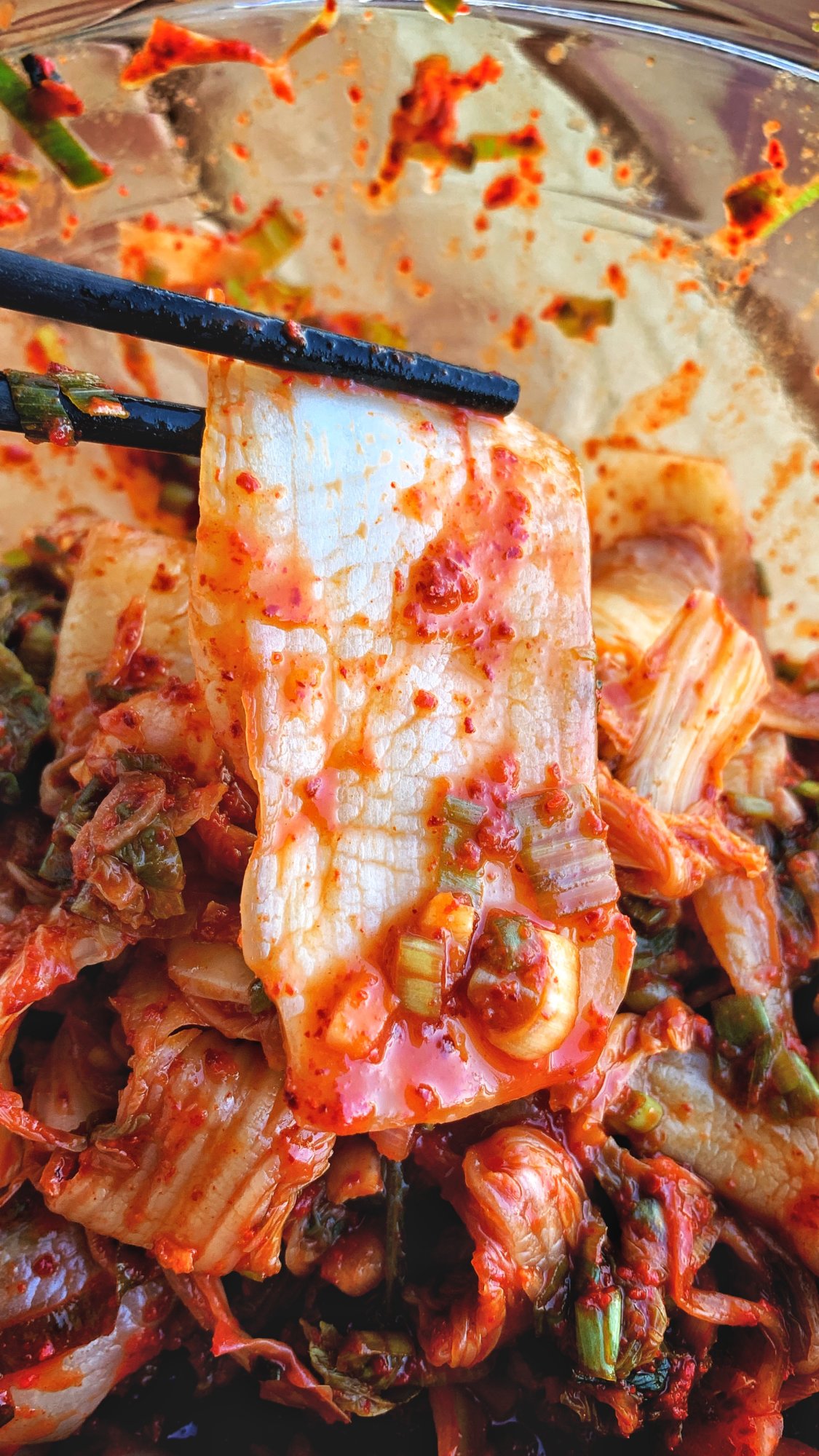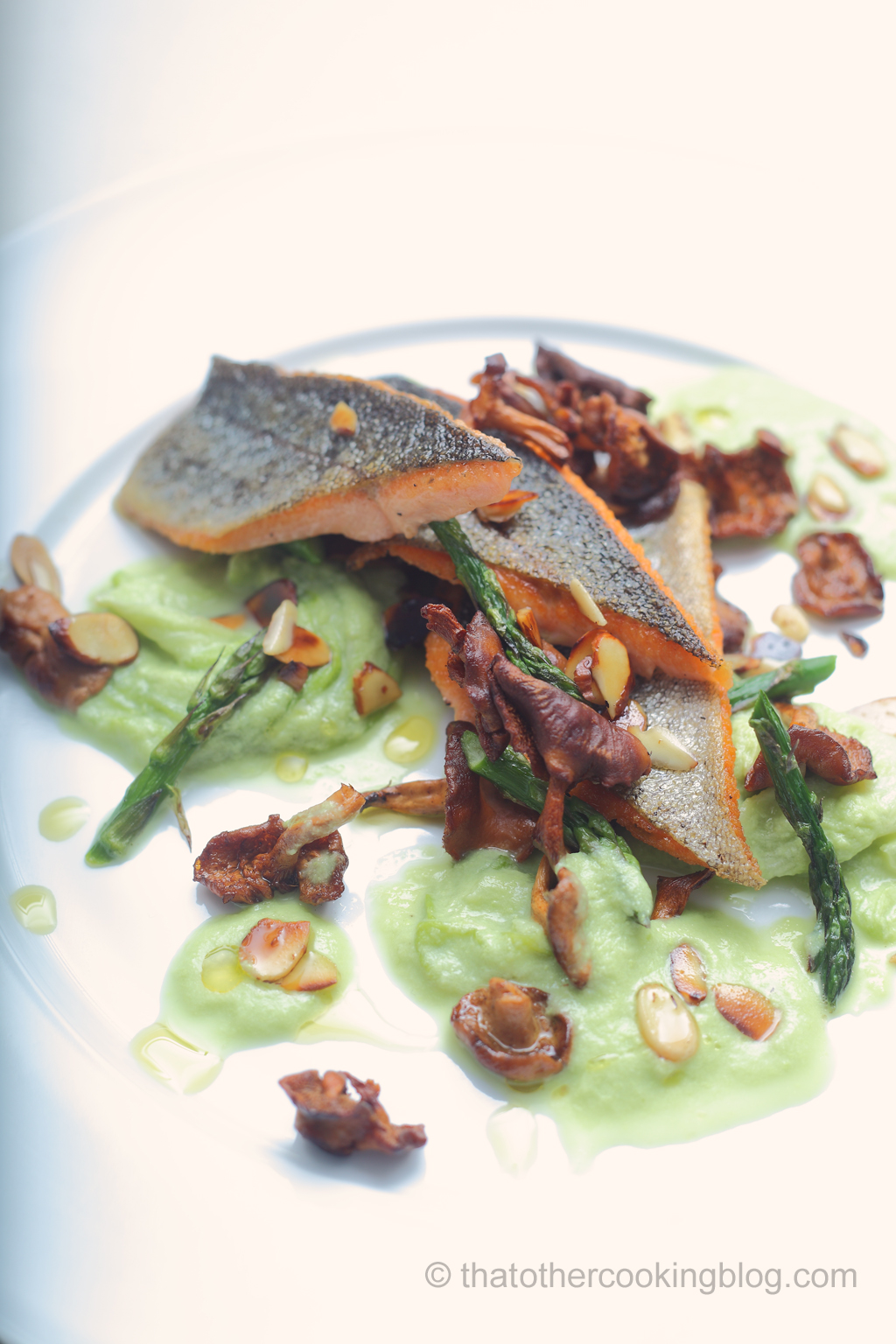The weather finally turns cooler around here in BC, and the disposition to cook and write about food and cooking seems to be coming back (It was extremely hot!) but anyways, this is a recipe I prepared a around july, right at the beginning of the horrible hot weather season, which in turn offered some of the best fresh vegetables and fruits I’ve had in a while. The quality of summer produce here in Vancouver is incredible and so is the fish. I can’t get over how good the quality of the fish is here.

Sablefish is wonderful and like most fish (if not all) require very little hocus-pocus in the kitchen. Salt, and some gentle heat and it’s done. Most fish can be cooked to 50C (around 125F) which is around the temperature of hot tap water. I’ve cooked fish using this hot water in a couple of occasions. Ok, back on track. This time I decided to pan roast it, which I find a lot of fun. Getting the skin crispy and the fish cooked will require some practice but is’t actually fairly easy. Again, the use of a thermometer is highly recommended, or if you have a sous vide bath. Then, that’s a no brainer. But let’s stick to traditional cooking methods on this post.
Ingredients (serves 2):
2 sablefish fillets skin on.
6 creamer potatoes peeled and kept whole
20 saffron strands (a couple of pinches)
30 green asparaguses, stalks and fronds separated.
6 cherry tomatoes
2 tsp paprika (for dusting your plates)
1/3 cup heavy cream
Salt, Pepper, White wine vinegar to taste.
baby watercress shoots
In most fish recipes, fish is the last thing to cook. Salting or brining the fish could be done at the beginning of your cooking session making sure the fish doesn’t absorb too much salt. Keep the brining/salting under an hour, and I would recommend, staying under 30 minutes. This time will also allow the fish to come closer to room temperature, but this isn’t critical to get it cooked right, with one exception, frozen fish. You must thaw it first. But if at all possible, try to use fresh fish.

Asparagus puree. Have a pot of boiling salty water (as if for pasta) and an ice water bath ready, and blanch the stalks for about 5 minutes (reserve the fronds for later). Be careful not to overcook them. They should have a nice bite to them and not taste raw. They will also turn bright green which is awesome. Stop the cooking by plunging them into the ice water bath. Strain and transfer the stalks to a blender. Add cream, and Maybe some of the cooking water. Blend, which is easier said than done. It takes some work to blend the stalks into a puree. Too much liquid, and you’ll end up with soup. Too little, and the blender won’t be able to to its job. So be patient and careful. Once the blender is finally able to create that vortex without the addition of any extra liquid, you should be there. At this point, adjust salt and blend for a few minutes, until velvety. I should have ran my blender a little longer. My puree was still a bit gritty. A fine sieve helps finishing the job as well.

Saffron potatoes. Place the potatoes in a microwave safe container. They should fit in one layer. Add enough water to cover them. Add the saffron strands, a few pinches of salt and microwave until soft. Or do the same on the stove, and boil the potatoes until soft. I like using the microwave for certain things. This potatoes are very small and cook quickly, so the microwave just seemed more practical. The saffron will release its beautiful color and texture into the hot water which the potatoes will absorb. Keep the potatoes in the saffron stock until ready to plate.
Asparagus fronds. Same as with the stalks. Blanch the fronds in salty boiling water for a little less time (about 3 minutes). This part of the asparagus is very tender and cooks really quick. Strain and drop in the ice water bath. Strain. Reserve.
The fish. Rinse the fish in cold water to remove any excess salt or brine. Dry with paper towels. Place your roasting pan over medium low heat. You could use a nonstick pan here but anything should work. Maybe a little olive oil if you’re working with a stainless steel pan. Once the pan gets warm. Add the fish skin side down. Some people like to score the skin. I sometimes do but not this time. Ok, here’s the important part. Patience. The pan should be softly sizzling. There should be good space between the 2 steaks, don’t overcrowd the pan. Keep your pan lid nearby at all times. And keep a little bit of water in a cup somewhere near your pan. Ah, and don’t forget that thermometer if you have one. Keep an eye on the fish. Don’t move it though. After 4-5 minutes, some of the fish fat in the skin should be rendered and the steaks should become more opaque. The fish might stick to the pan at first (this is why you shouldn’t move it at first), but eventually the fish is released and that’s usually when the skin is crisp (hard to tell on a nonstick). If you take a peak and the skin looks golden and crisp, check the core temperature. Should be nearly 50C. The surface might be a little colder. Remove the pan from the stove. Close the lid. And let it rest for a few minutes. This will cook help cook the top. You could add a little water to the pan to create steam as well. And then close the lid. Eventually, this all becomes second nature.
Plating. Dust your plates with some paprika using a fine strainer as if dusting a cake with confectioner’s sugar. Add a Tbsp of the asparagus puree and sit the fish steak right on it, skin side up. Garnish with the saffron potatoes, asparagus fronds and cherry tomatoes (halved). Add some baby watercress shoots. Drizzle some olive oil. Done. Until the next one!
Wanna get more sous-vide cooking guides and cool cooking how-to’s in your mailbox? You know what needs to be done!
We never spam. You should only be getting updates when new content is posted on the site. We also respect your privacy. We don’t share your email address with anyone and you can unsubscribe anytime!





11 comments
Wow the pic here are incredible!!! Glad it is cooling down, wish I could say the same from LA 🙁
thanks Lotis! I know, the weather in LA has been brutal. Global cooling??
Wow, Paul, you are full of nice surprises. I just noticed your first post in months, and then scroll down and find another one! As usual your plating is picture perfect and the technique just right. For those who own the equipment, cooking the fish sous-vide seems a lot easier than what you describe here. I never managed to get the skin crispy without overcooking or undercooking the fish, until I started using sv. Great post!
Thanks Stefan! Very nice compliments 🙂 I’m really glad you liked it. I have to agree with you, cooking sous vide is a lot easier but it does require some equipment and some now-how that a lot of home cooks don’t yet have. The pan roasting approach is tricky at first, but over time, becomes simple and you get the nice crispy skin. There will be a bit of an overcooked gradient on the meat, but really nothing that can be done about this. It can only be minimized. Thanks again Stefan!
Beautiful colors, Paul, and I love the flavors. 🙂
Perfect description on crisping the skin. Beautiful post, Paul.
thank you Susan!!!
Incredible! The recipe, the technique, the photos. And you achieved such a gorgeous colour with the potatoes. If I could just reach into the screen… 🙂
you leave the best comments! 🙂 thank you so much!!!How have you been??
Your food deserves the best of comments 🙂 I’ve been well, thank you, just insanely busy. How are you? Having a lovely start to the year?
thank you 🙂 Well, being busy is a good thing haha, I’ve been busy as well, but had a nice long break over the holidays, so now is back to work!